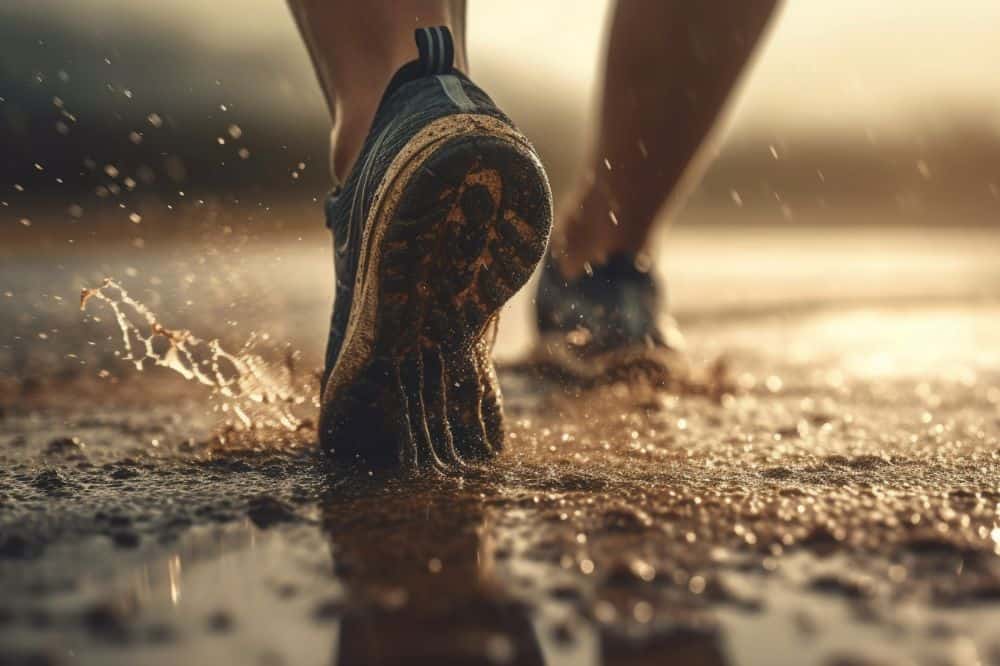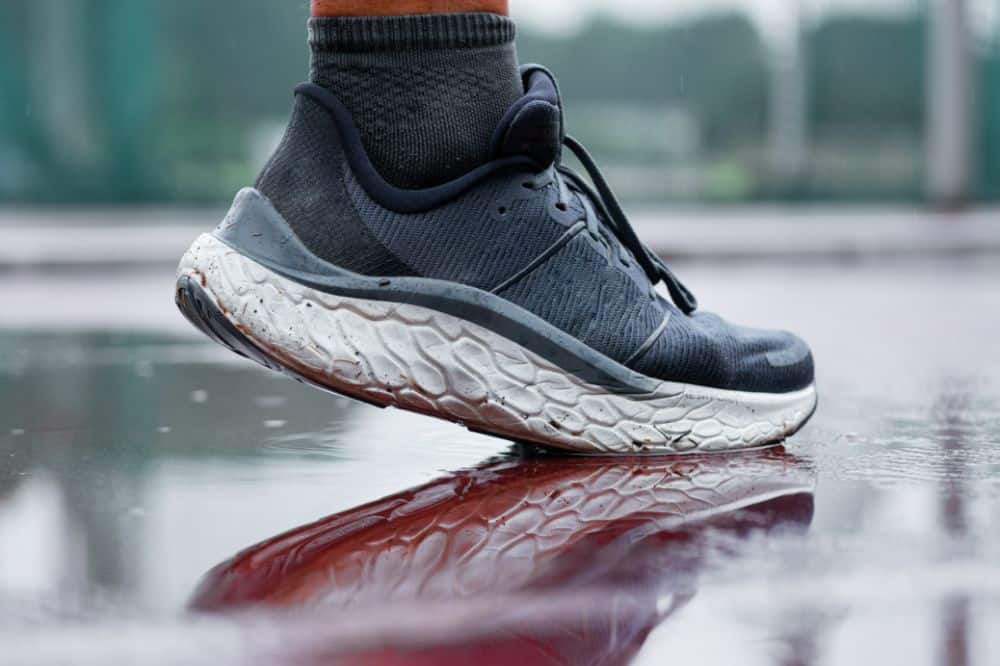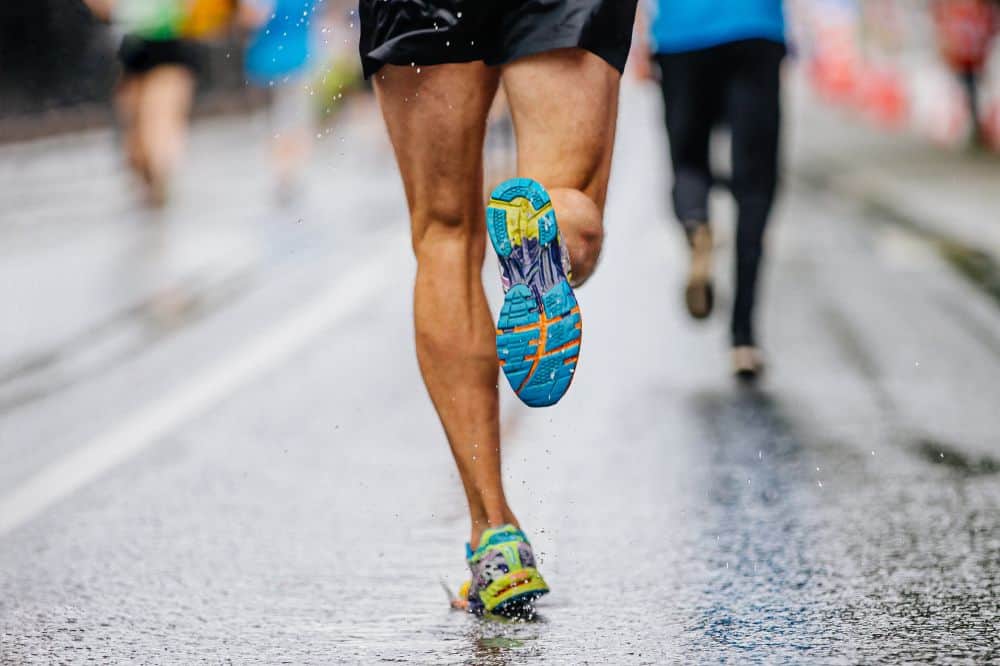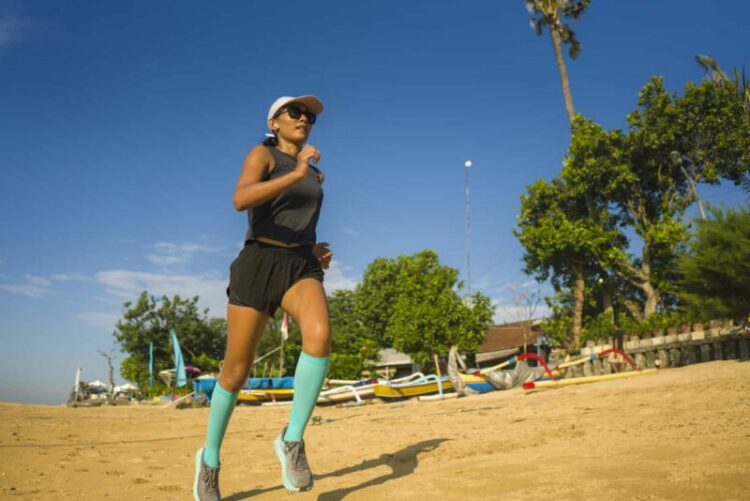What does drop mean in running shoes? It is a question that often leaves both seasoned athletes and beginners scratching their heads. While it may sound like insider jargon, understanding this term is crucial for selecting the right pair of running shoes.
In the world of running, the “drop” plays a pivotal role in determining your comfort, performance, and injury prevention. Imagine it as the slope of a hill your feet are navigating with every stride, affecting your gait and landing.
Want to know more? Let’s unravel the mystery of drop so you can make informed decisions when choosing the perfect pair of running shoes.
What Does Drop Mean in Running Shoes?

Running shoes are more than just stylish sneakers; they are finely tuned pieces of athletic equipment designed to optimize your running experience. At the heart of this design lies a crucial factor known as the “drop.”
Running shoe drop, also known as heel-to-toe drop or simply “drop,” refers to the height difference between the heel and forefoot of the shoe. It may seem like a minor detail, but this measurement plays a pivotal role in how your feet interact with the ground during each stride.
A shoe’s drop significantly influences your running form and the distribution of impact forces. Runners with various preferences and biomechanics can benefit from different drop levels.
For instance, a lower drop encourages a more natural foot strike and a midfoot or forefoot landing, which can be advantageous for those aiming to promote a more efficient and injury-resistant running style. Conversely, a higher drop can provide more cushioning and support for heel strikers.
Overview of Running Shoe Anatomy
Before you can fully grasp the concept of a running shoe drop, it is essential to have a basic understanding of a running shoe’s anatomy.
Running shoes consist of several key components, including the upper, midsole, outsole, and, of course, the drop. The upper secures your foot in the shoe, the midsole provides cushioning, and the outsole offers traction. The drop, on the other hand, determines the angle at which your foot rests within the shoe.
Picture the drop as a gentle slope, where the heel sits higher than the forefoot or vice versa, depending on the shoe’s design. This incline sets the stage for how your foot strikes the ground and how it transitions through each step of your run.
In essence, the drop is the foundation upon which the entire running shoe is built, making it a critical factor to consider when choosing the right pair for your running goals.
How Important Is a Running Shoe Drop?

The heel-to-toe differential, or drop, plays a pivotal role in how your foot makes contact with the ground during each stride. A lower drop, typically in the range of 0mm to 6mm, means that the heel and forefoot are closer to the same level.
This design encourages a more natural foot strike, often promoting a midfoot or forefoot landing. As such, a lower drop is favored by those seeking a more minimalistic and responsive feel. It encourages a midfoot strike, which can enhance running efficiency and reduce the risk of certain injuries.
On the other hand, a higher drop, which can range from 8mm to 12mm or more, elevates the heel, making it suitable for runners who tend to land on their heels. It provides additional cushioning and is often preferred by heel strikers who appreciate the extra shock absorption.
Impact on Running Form
Your choice of drop isn’t just a matter of personal preference. It can significantly impact your running form and overall experience. Runners with a history of injuries or discomfort may find relief in a shoe with a drop that better aligns with their natural biomechanics.
It’s important to note that drop isn’t a one-size-fits-all solution. It varies depending on factors like running style, body mechanics, and personal comfort.
So, understanding running shoe drop entails grasping the numerical measurement, recognizing its impact on your footstrike, and acknowledging its potential influence on your running form. The right drop depends on your individual needs, making it a critical factor to consider when selecting your next pair of shoes.
Lower vs Higher Drops
The choice between lower and higher drop shoes ultimately depends on your running style, biomechanics, and individual preferences. Carefully evaluating the benefits and potential drawbacks of each drop category will guide you toward the best-suited pair for your running journey.
Lower Drop Shoes
Lower drop shoes offer several advantages. They promote a more natural and efficient running form by encouraging midfoot or forefoot striking. This can reduce the risk of certain injuries, particularly for those with a neutral or supinating gait.
Lower drop shoes are often lighter, providing a nimble feel favored by many competitive and minimalist runners. They can help strengthen foot and calf muscles, enhancing overall stability and balance.
That said, lower drop shoes may require an adjustment period, as they encourage a different footstrike pattern. Runners transitioning to lower drop shoes should be cautious to avoid overuse injuries.
Higher Drop Shoes
Higher drop shoes offer substantial cushioning, making them ideal for runners who are prone to heel striking or those seeking extra comfort on longer runs. The elevated heel can provide relief from conditions like Achilles tendonitis or calf strains.
Additionally, high drop shoes are well-suited for runners who appreciate a more traditional feel and have successfully used them in the past.
Conversely, higher drop shoes may promote heel striking, which can lead to its own set of issues, such as increased impact on the knees and hips. The additional cushioning in high drop shoes may also add weight, impacting the overall feel and speed of the shoe.
What Are the Most Common Drop Categories?

Running shoe drops come in various categories, each catering to specific running styles and preferences. Understanding these common drop categories is crucial when choosing the right shoe for your needs.
Zero Drop Shoes
Zero drop shoes, as the name suggests, have no heel-to-toe differential. The heel and forefoot are at the same level, offering a flat and natural platform for your feet.
These shoes promote a midfoot or forefoot strike, encouraging a more natural running gait. They are favored by runners seeking a minimalistic and close-to-the-ground feel. They can also help strengthen the foot and calf muscles but may require an adjustment period for those accustomed to higher drops.
Low Drop Shoes
Low drop shoes typically have a drop measurement ranging from 0mm to 6mm. They strike a balance between zero drop and higher drop options, making them versatile for various running styles.
These shoes can provide a more cushioned feel than zero drop shoes while still encouraging a midfoot or forefoot strike. They’re ideal for runners looking to transition from traditional high-drop shoes to a more natural running form.
Moderate Drop Shoes
Moderate drop shoes fall within the 8mm to 10mm range and are a common choice among runners. They offer a good compromise between cushioning and a natural footstrike.
These shoes suit a wide range of runners, from those with mild pronation to neutral runners. What’s more, they are also known for providing a touch of cushioning for heel strikers while still allowing for midfoot or forefoot landings.
High Drop Shoes
High drop shoes typically have a drop measurement of 12mm or more. These shoes are designed with extra cushioning and support, making them ideal for heel strikers who prefer ample shock absorption. They help reduce the stress on the heel and joints during long runs.
However, it’s essential to note that high drop shoes may not be suitable for runners aiming to transition to a more natural running form, as the elevated heel can discourage midfoot or forefoot strikes.
Factors Influencing Drop Selection
Selecting the right drop for your running shoes is a decision that should be based on several key factors. These factors play a crucial role in ensuring your comfort, performance, and injury prevention when out on the road or trail.
Running Style and Gait Analysis
One of the primary factors in choosing the right drop is your running style and gait analysis. Understanding how your foot interacts with the ground can help determine the optimal drop for your needs.
A gait analysis, often performed by specialty running stores or professionals, can identify whether you have a pronation issue, supination, or a neutral gait. This information can guide you towards the right drop that promotes a natural and efficient running motion.
Foot Strike Pattern
Another critical consideration is your foot strike pattern. Are you a heel striker, a midfoot striker, or a forefoot striker? This aspect of your running form significantly influences your drop preference.
Heel strikers may benefit from shoes with higher drops, which provide extra cushioning for the initial heel impact. Midfoot and forefoot strikers, on the other hand, often find comfort and efficiency in shoes with lower drops that encourage a more natural landing.
Terrain and Surface Considerations
Consider the surface you run on and the conditions you encounter regularly when deciding on the drop that suits you best.
For road runners, a variety of drop options can be suitable, depending on personal preferences. On the other hand, trail runners may opt for shoes with a slightly lower drop to enhance stability and control on uneven terrain.
Transitioning to a New Drop
If you’re considering changing your drop preference, remember to transition gradually. Abruptly switching from a high drop to a low drop, for instance, can stress your muscles and joints.
To prevent injuries, ease into the new drop by gradually incorporating it into your running routine. This transitional period allows your body to adapt to the different biomechanics associated with the new drop, reducing the risk of discomfort or injury.
Final Thoughts
Understanding what does drop mean in running shoes empowers runners to make informed choices that can significantly impact their performance and comfort.
The right shoe drop can enhance your running experience by promoting proper biomechanics, reducing the risk of injury, and optimizing your gait. On the other hand, a mismatched drop can lead to discomfort, pain, and even long-term issues.
The journey of finding the perfect running shoes is much like a runner’s marathon. It requires patience, knowledge, and a deep understanding of your unique needs. By grasping the significance of shoe drop, you’re better equipped to choose a pair that aligns with your running style and physical characteristics.
So, the next time you’re shopping for running shoes or discussing your favorite hobby with fellow runners, you can now offer valuable insights to help others embark on their own successful running adventures. Remember, the right pair can make all the difference in reaching your fitness goals and enjoying every stride along the way.














Hmm, I didn’t know that the anatomy of a shoe and how it is designed makes a big difference in one’s running ability.
That’s an interesting fact to know…Thanks for sharing such a valuable piece of information. Running shoe drop. I had to read the article twice to understand it properly, but I think I do now though.
Once again, thanks for sharing this.
Hi, Stella, and thank you.
Thank you for your kind words.
Yes, the development is fast. In the whole sports gear, all details matter, even if they look small, for people taking part in a competition and for people trying to get in good shape or feel well.
It’s great to hear about the benefit of the article, too.
Don’t hesitate to contact me to help you with anything else or if you have any questions.
Hi there!
Thanks for sharing this interesting article! To be honest I had no idea what the drop shoes are! Haha, I just bought the pair of trainers and I was running with them, that’s it. Now, thanks to your article I know why it is important to choose the proper training for running. I appreciate your thoughts! All the best to you!
Hi, Blazej777, and thank you.
Thank you for your kind words.
You are not the first I heard talk about him/she buying running shoes without understanding if it was the best choice for the body.
And it is understandable! But at the same time, it is vital that you buy the right shoes for yourself! And I talk about the experience here. Even though I was training for games in my sport, I didn´t realize at that time that the shoes we were using were not good for my body.
So I got injured in my ankle, which I would not have done if I had the knowledge I got shortly after it!
This is one part of why we stress so much: to let our readers get as much knowledge as we can!
It’s great to hear about the benefit of the article, too.
Don’t hesitate to contact me to help you with anything else or if you have any questions.